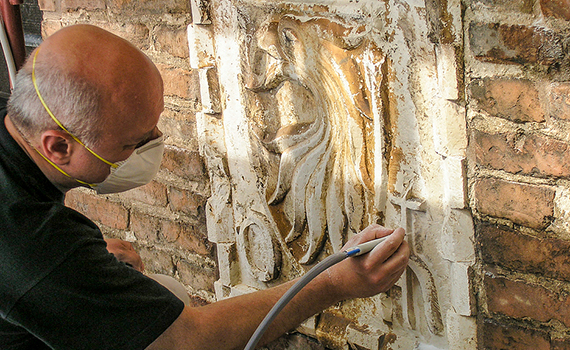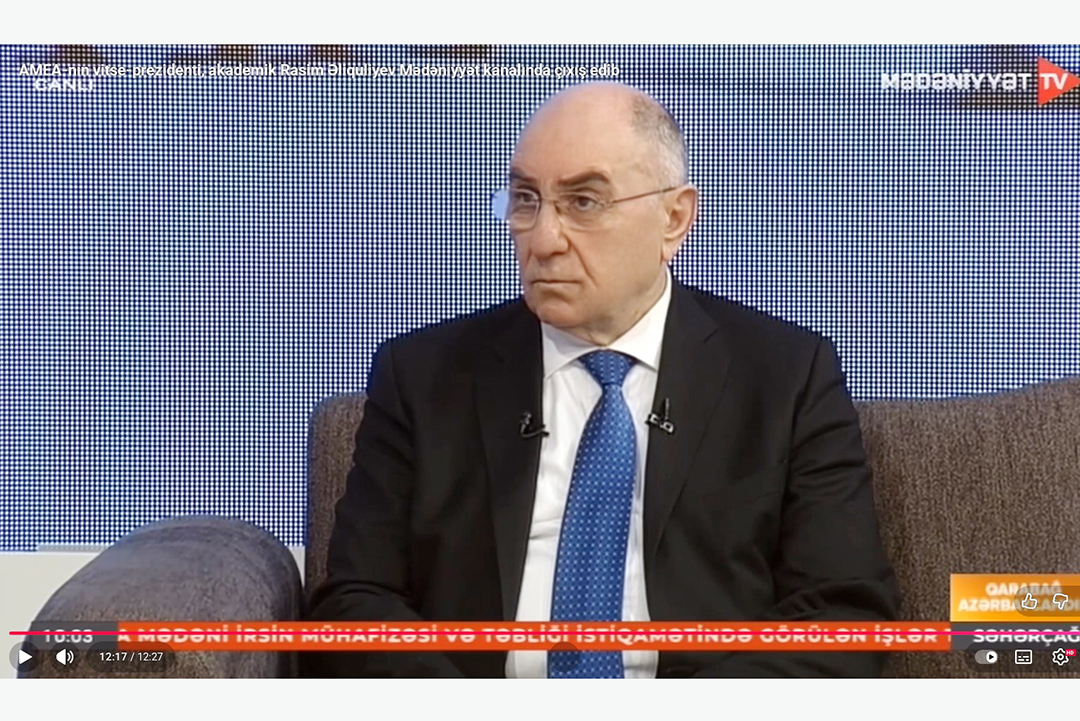NEWS
Restoration and protection of monuments with a 3D laser

Within the framework of one of the most prestigious European scientific events - the Science Week in Berlin (Berlin Science Week), which was held from November 1 to 10, 2019, scientists of the St. Petersburg State Electrotechnical University of LETI introduced the methods of restoration, documentation and creation of copies of artifacts that they developed with using laser and optoelectronic methods and technologies. Practical experience has proven their effectiveness and safety, however, the mass introduction of these technologies in museum activities has not yet occurred.
St. Petersburg is known throughout the world not only for its abundance of cultural and historical monuments, but also for its harsh climate, under the influence of which these monuments are inexorably destroyed. And in recent decades, the unfavorable environmental atmosphere of the city, one of the largest megacities in the world, has exacerbated this problem.
“The question of the need to develop new highly effective methods and technologies for restoration and documentation of monuments has been on the agenda for a long time,” commented Vadim Parfenov, professor of the photonics department of St. Petersburg State Electrotechnical University LETI. And so far, the only scientific center in Russia that is studying the possibilities of using laser technology and its implementation in the field of museum work and the development of new methods and technologies is LETI.
According to it-world.ru, the first experience in the use of lasers in restoration took place in 2006 in cooperation with the Heritage Restoration Workshop company. Using a laser, scientists and restorers cleaned marble tombstones in the 18th-century necropolis of the Alexander Nevsky Lavra. In 2007, together with experts from the State Russian Museum, they cleaned 30 Italian marble sculptures of the 18th century in the Summer Garden in St. Petersburg. The most interesting restoration work in this area is the cleaning of the old biological lesions, black gypsum crusts and soot and dust pollution of the sculpture “Marshmallows swinging on a branch”, the manufacture of which dates back to the 1860s.
In all these works, the pollution was removed without any damage to the stone surface of the monuments, and the laser proved its effectiveness as a restoration tool.
Another relevant practical development of LETI scientists is the use of 3D laser scanning technology to create electronic passports and physical copies of sculptural monuments.
“Today in our city there is an active process of making copies of sculptural monuments, followed by museumification of the originals. But the question of what technologies can and should be used when creating copies of the monuments is very important. For example, copies of stone substitutes are obtained by molding the original sculpture, and this inevitably leads to a significant physico-chemical effect on its surface, ”explains Vadim Parfyonov. The alternative method developed by LETI experts - non-contact copying of sculptural monuments - allows making copies of natural stone without causing any harm to the sculptures themselves. So, by creating a 3D computer model as a result of 3D laser scanning, scientists made a copy of the marble bust of Primavera from the Tsarskoye Selo collection, a copy of the marble bust of the Russian emperor Peter I from the Peterhof collection, and also made a replica of the lost sculptures from the former estate of Sergievka in the suburbs of St. Petersburg.
The methods of restoration, documentation and creation of copies of sculptural monuments presented during Berlin Science Week 2019, developed by LETI scientists and having no analogues in the world, were very interested in their foreign colleagues. Russian scientists hope that the technologies and methods of restoration developed by them will arouse practical interest, which will make it possible to use them massively in the practice of museum work in Russia. In the meantime, according to scientists, the implementation of innovative technologies is slow. The main reasons are not only lack of funding, but also a wary attitude to new methods, despite the already quite impressive and very positive experience in their use.





